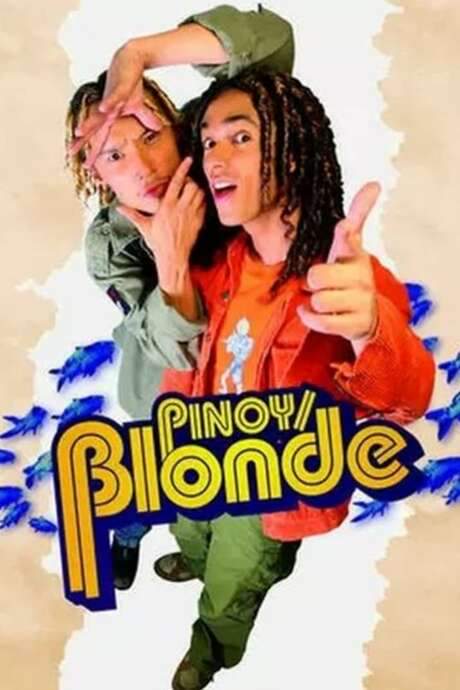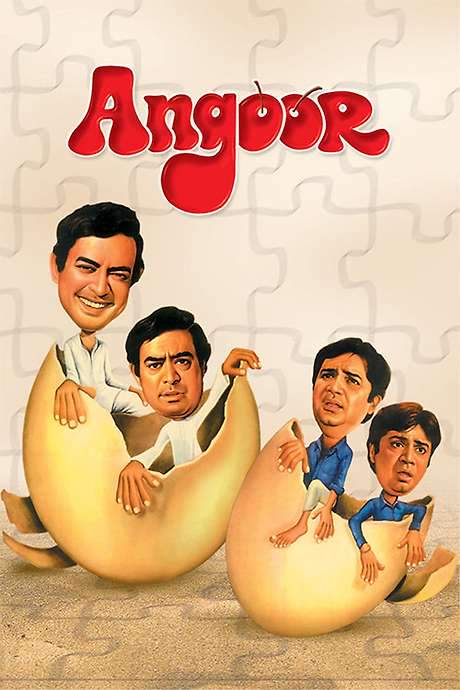
Otso Otso Pamela-mela Wan
Year: 2004
Runtime: 107 mins
Language: Tagalog
Director: Jerry Lopez Sineneng
Misunderstood by their families, friends Boy and Andoy flee to start anew, only to discover they’re identical to another pair. Twins Mao and Dao escape to avoid arranged marriages. A chaotic mix‑up forces Boy and Andoy to pose as Mao and Dao while the twins impersonate them, sparking havoc when one duo decides to ultimately return home.
Warning: spoilers below!
Haven’t seen Otso Otso Pamela-mela Wan yet? This summary contains major spoilers. Bookmark the page, watch the movie, and come back for the full breakdown. If you're ready, scroll on and relive the story!
Otso Otso Pamela-mela Wan (2004) – Full Plot Summary & Ending Explained
Read the complete plot breakdown of Otso Otso Pamela-mela Wan (2004), including all key story events, major twists, and the ending explained in detail. Discover what really happened—and what it all means.
In a hospital in 1976, a lone nurse Nurse Tessie guards the newborns as a freak storm, a quake, and a citywide blackout roil the building. The chaotic conditions cause a critical mix-up: babies are swapped among families, weaving a tangled web that will echo through decades. The Nurse’s wary watch is the quiet through-line as the hospital’s corridors become a stage for fate to meddle with birth and belonging.
Jumping to the present, two young adults grow up under the strain of being outsiders: Amboy and Boy. Amboy wrestles with academic challenges that leave him lacking in certain opportunities, while Boy feels pressure to prove himself in a family that measures worth by talent and performance. Their paths diverge in ways that sharpen their sense of otherness, even as both strive to fit into the world around them. The mood remains hopeful yet tense, as small acts of courage start to shape their identities and futures.
In Chinatown, the siblings Mao and Dao are pampered by their mother, Mrs. Go, who has her own ideas about tradition and marriage. The two resist the weight of arranged unions, preferring to chart their own courses even as the expectations of family and culture press in. The dynamic in this corner of the story adds a contrasting texture to the boys’ struggles, offering a different lens on how love, loyalty, and independence play out in a tightly knit community.
As the drama unfolds, Amboy and Boy interpret a dramatic moment—an attempted assassination of the Mayor—through a performative lens, mistakenly believing they have played a direct role. Believing themselves to be the town’s unwitting heroes, they flee to Manila, while Mao and Dao head toward Ilocos Norte, hoping to catch a boat ride to Taiwan. The voyage becomes a misadventure that mirrors the larger theme: how youths misread danger and opportunity when the world around them is quick to assign labels and roles. The two pairs ride separate Partas buses, and a chance stopover in a rural crossroads opens up a corridor of crossed fates and hidden truth.
On the road, Mao’s singing and Dao’s quick wits elevate them into instant symbols of talent and intellect, and the sisters’ and brothers’ stories begin to collide with the townspeople’s expectations in startling ways. The world treats Mao and Dao as the glamorous versions of the twins, while Boy and Amboy are perceived as the originals—an illusion that grows more complicated with every mile they travel. A pivotal moment comes when a re-creation of a dance—the Otso-Otso moment—is reinterpreted, and Dao inadvertently crafts a different, equally sensational routine: the Pamela-Mela-Wan dance. The moment crystallizes how performance, perception, and identity braid together in public life.
A dramatic turn follows when a bus crash, triggered by a distraction related to the Nurse’s efforts to manage the chase, shuffles the players and places Mao and Dao under Mrs. Go’s care, while Boy and Amboy maneuver to stay connected to their families. Truth, once tucked away, begins to surface: the public’s memory of heroism clashes with the new reality that Mao is a twin to Boy and Dao is a twin to Amboy. The revelation unsettles expectations and reshapes loyalties, forcing everyone to confront what it means to be loved, to belong, and to choose one’s own path in the face of longstanding traditions.
With the truth finally on the table, Boy, Amboy, Mao, and Dao—along with Mrs. Go and the surrounding communities—return to Ilocos to seek reconciliation. They persuade Mao and Dao to step back from plans to flee to Taiwan, urging them to embrace the families that raised them and to say aloud the love that has always been there. The broader reconciliation unfolds at the Mayor’s thanksgiving celebrations, where confusion among the townsfolk gives way to a shared recognition that family is more complicated and more enduring than simple labels. The Nurse arrives to deliver a final, clarifying message: the twins were switched because of the hospital accident, and the long-held confusion begins to lift.
In the epilogue, the Nurse’s search bears fruit as she tracks down Mrs. Go’s son, a child raised by an African family. Her discovery is a moment of quiet triumph, a reminder that even in a world of tangled identities and mistaken destinies, every last baby matters and every story can find its rightful place. The film closes on a note of tentative peace, with the families—old and new—sharing a renewed sense of belonging and a willingness to celebrate the dances that remind them of their connected hearts.
Last Updated: October 09, 2025 at 16:28
Unlock the Full Story of Otso Otso Pamela-mela Wan
Don't stop at just watching — explore Otso Otso Pamela-mela Wan in full detail. From the complete plot summary and scene-by-scene timeline to character breakdowns, thematic analysis, and a deep dive into the ending — every page helps you truly understand what Otso Otso Pamela-mela Wan is all about. Plus, discover what's next after the movie.
Otso Otso Pamela-mela Wan Timeline
Track the full timeline of Otso Otso Pamela-mela Wan with every major event arranged chronologically. Perfect for decoding non-linear storytelling, flashbacks, or parallel narratives with a clear scene-by-scene breakdown.

Characters, Settings & Themes in Otso Otso Pamela-mela Wan
Discover the characters, locations, and core themes that shape Otso Otso Pamela-mela Wan. Get insights into symbolic elements, setting significance, and deeper narrative meaning — ideal for thematic analysis and movie breakdowns.

Similar Movies to Otso Otso Pamela-mela Wan
Discover movies like Otso Otso Pamela-mela Wan that share similar genres, themes, and storytelling elements. Whether you’re drawn to the atmosphere, character arcs, or plot structure, these curated recommendations will help you explore more films you’ll love.
Explore More About Movie Otso Otso Pamela-mela Wan
Otso Otso Pamela-mela Wan (2004) Scene-by-Scene Movie Timeline
Otso Otso Pamela-mela Wan (2004) Movie Characters, Themes & Settings
Otso Otso Pamela-mela Wan (2004) Spoiler-Free Summary & Key Flow
Movies Like Otso Otso Pamela-mela Wan – Similar Titles You’ll Enjoy
Old Dogs (2009) Film Overview & Timeline
Daddy O! Baby O! (2000) Ending Explained & Film Insights
Pinoy/Blonde (2005) Movie Recap & Themes
D’ Lucky Ones! (2006) Plot Summary & Ending Explained
Please Twins! (1000) Full Movie Breakdown
Mano Po (2002) Plot Summary & Ending Explained
Pido Dida: Sabay Tayo (1990) Ending Explained & Film Insights
Angoor (1982) Full Movie Breakdown
Pasukob (2007) Ending Explained & Film Insights
Ako Si Kiko, Ako Si Kikay (1987) Ending Explained & Film Insights
Bala at Lipstick (1994) Spoiler-Packed Plot Recap
Ikaw Pa Rin: Bongga Ka Boy! (2008) Plot Summary & Ending Explained
Tisoy! (1977) Complete Plot Breakdown
Twin Dragons (1992) Full Summary & Key Details
Haba-Baba-Doo! Puti-Puti-Poo! (1998) Complete Plot Breakdown

















